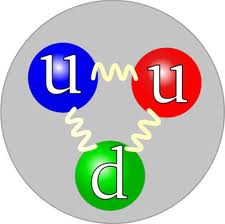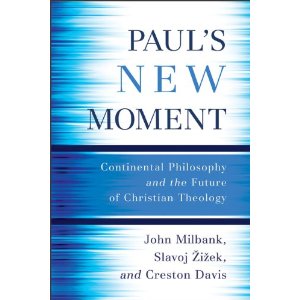Soul of the party (originally published in NewStatemen April 1, 2010)
St Paul had it right – using religion to rock the foundations of authority.

Why is theology emerging again as a point of reference for radical politics? It is emerging not in order to supply a divine “big other”, guaranteeing the final success of our endeavours, but, on the contrary, as a token of our radical freedom, with no big other to rely on. Fyodor Dostoevsky was aware of how God gives us freedom and responsibility — he is not a benevolent master steering us to safety, but one who reminds us that we are wholly unto ourselves.
The God that we get here is rather like the God from the old Bolshevik joke about a communist propagandist who, after his death, finds himself in hell, where he quickly convinces the guards to let him leave and go to heaven. When the devil notices his absence, he pays a visit to God, demanding that He return to hell what belongs to Satan. However, as soon as he addresses God as “my Lord”, God interrupts him: “First, I am not ‘Lord’, but a comrade. Second, are you crazy, talking to fictions? I don’t exist! And third, be short — otherwise, I’ll miss my party cell meeting!”
This is the kind of God an authentic left needs: a God who wholly “became man” — a comrade among us, crucified together with two social outcasts — and who not only “doesn’t exist” but also himself knows this, accepting his erasure, entirely passing over into the love that binds members of the Holy Ghost (the party, the emancipatory collective). Catholicism is often designated as a compromise between “pure” Christianity and paganism — but what, then, is Christianity at the level of its notion? Protestantism? One should take a further step here: the only Christianity at the level of its notion, which draws all the consequences from its basic event — the death of God — is atheism. The Spanish anarchist Buenaventura Durutti said: “The only church that illuminates is a burning church.” He was right, though not in the anti-clerical sense his remark was intended to have. Religion only arrives at its truth through its self-cancellation.
In “The Intellectual Beast Is Dangerous”, Brecht asserts: “A beast is something strong, terrible, devastating; the word emits a barbarous sound.” Surprisingly, he writes: “The key question, in fact, is this: how can we become beasts, beasts in such a sense that the fascists will fear for their domination?” It is thus clear that, for Brecht, this question designates a positive task, not the usual lament on how Germans, such a highly cultured people, could have turned into the Nazi beasts. “We have to understand that goodness must also be able to injure — to injure savagery.”
It is only against this background that we can formulate the gap that separates oriental wisdom from Christian emancipatory logic. The oriental logic accepts the primordial void or chaos as the ultimate reality and, paradoxically, for this very reason, prefers organic social order with each element in its proper place. At the very core of Christianity, there is a vastly different project: that of a destructive negativity, which does not end in a chaotic void but reverts (and organises itself) into a new order, imposing it on to reality.
For this reason, Christianity is anti-wisdom: wisdom tells us that our efforts are in vain, that everything ends in chaos, while Christianity madly insists on the impossible. Love, especially a Christian one, is definitely not wise. This is why Paul said: “I will destroy the wisdom of the wise” (“Sapientiam sapientum perdam,” as his saying is usually known in Latin). We should take the term “wisdom” literally here: it is wisdom (in the sense of “realistic” acceptance of the way things are) that Paul is challenging, not knowledge as such.
With regard to social order, this means that the authentic Christian tradition rejects the wisdom that the hierarchic order is our fate, that all attempts to mess with it and create another egalitarian order have to end up in destructive horror. Agape as political love means that unconditional, egalitarian love for one’s neighbour can serve as the foundation for a new order.
The form of appearance of this love is what we might also call the idea of communism: the urge to realise an egalitarian social order of solidarity. Love is the force of this universal link that, in an emancipatory collective, connects people directly, in their singularity, bypassing their particular positions in a social hierarchy. Indeed, Dostoevsky was right when he wrote: “The socialist who is a Christian is more to be dreaded than a socialist who is an atheist” — yes, dreaded by his or her enemies.
It was St Paul who provided a surprisingly relevant definition of the emancipatory struggle: “For our struggle is not against flesh and blood, but against leaders, against authorities, against the world rulers [kosmokratoras] of this darkness, against the spiritual wickedness in the heavens” (Ephesians 6:12). Or, translated into today’s language: “Our struggle is not against concrete, corrupted individuals, but against those in power in general, against their authority, against the global order and the ideological mystification that sustains it.”
One should resolutely reject the liberal-victimist ideology that reduces politics to avoiding the worst, to renouncing all positive projects and pursuing the least bad option. As Arthur Feldmann, a Viennese-Jewish writer, bitterly noted, the price we usually pay for survival is our life.
Slavoj Žižek is a philosopher and critic. His latest book is “First As Tragedy, Then As Farce” and with Creston Davis and John Milbank, “Paul’s New Moment: Continental Philosophy and the Future of Christian Theology“








 And it was Immanuel Kant (1724-1804) who united these two Enlightenment Axioms into a singular indistinguishable unit that was at the same time a Universal ethical imperative. For all human action, according to Kant had to fold to the universal logic of reason itself under the banner of “duty.” Finally it is the duty of all reasonable persons “subjects” to perform that action which itself conforms to the ahistorical logic of Reason alone irrespective of one’s tradition or metanarrative truth-claims. To state this in its negative form would be to say that anyone who broke the Universal-Ethical-Law by not obeying the demand of duty must thus be irrational and contradictory and therefore not a “subject” at all.
And it was Immanuel Kant (1724-1804) who united these two Enlightenment Axioms into a singular indistinguishable unit that was at the same time a Universal ethical imperative. For all human action, according to Kant had to fold to the universal logic of reason itself under the banner of “duty.” Finally it is the duty of all reasonable persons “subjects” to perform that action which itself conforms to the ahistorical logic of Reason alone irrespective of one’s tradition or metanarrative truth-claims. To state this in its negative form would be to say that anyone who broke the Universal-Ethical-Law by not obeying the demand of duty must thus be irrational and contradictory and therefore not a “subject” at all. In this precise respect Monarchical rule and the Secular Nation-State simply function in the same way relative to the subject. But just as Monarchical rule has its mythos that grounded its authority in something external to itself (i.e., a theology) so too the Nation-State has its “story” grounded in falsehood. What is this duplicity of the Secular Nation-State form? It is the idea that the Subject is the ground of absolute authority as such—but really it is not the subject who has authority but rather a disembodied Universal Logic called Reason that places its absolute demand onto the human subject to OBEY! In other words, you are free to do as you please so long as you OBEY the demand of Universal Reason! This is the updated version of a theology that tells you to “Love God and do what you please!” And this precise demand to OBEY is the legal logic employed by the Nation-State in order to maintain peace (i.e., to maintain its own power).
In this precise respect Monarchical rule and the Secular Nation-State simply function in the same way relative to the subject. But just as Monarchical rule has its mythos that grounded its authority in something external to itself (i.e., a theology) so too the Nation-State has its “story” grounded in falsehood. What is this duplicity of the Secular Nation-State form? It is the idea that the Subject is the ground of absolute authority as such—but really it is not the subject who has authority but rather a disembodied Universal Logic called Reason that places its absolute demand onto the human subject to OBEY! In other words, you are free to do as you please so long as you OBEY the demand of Universal Reason! This is the updated version of a theology that tells you to “Love God and do what you please!” And this precise demand to OBEY is the legal logic employed by the Nation-State in order to maintain peace (i.e., to maintain its own power).

